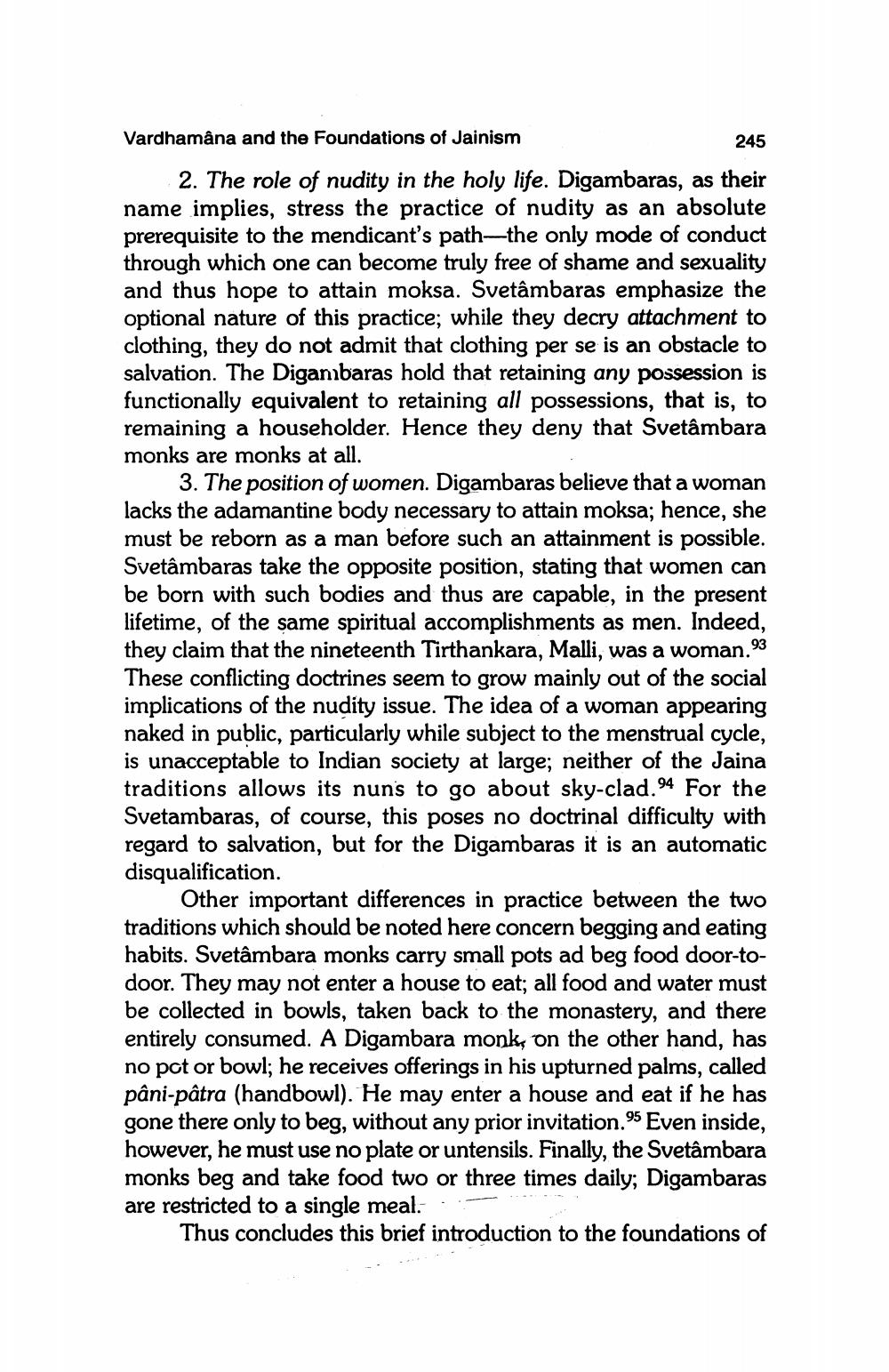________________
Vardhamâna and the Foundations of Jainism
245
2. The role of nudity in the holy life. Digambaras, as their name implies, stress the practice of nudity as an absolute prerequisite to the mendicant's path-the only mode of conduct through which one can become truly free of shame and sexuality and thus hope to attain moksa. Svetâmbaras emphasize the optional nature of this practice; while they decry attachment to clothing, they do not admit that clothing per se is an obstacle to salvation. The Diganbaras hold that retaining any possession is functionally equivalent to retaining all possessions, that is, to remaining a householder. Hence they deny that Svetâmbara monks are monks at all.
3. The position of women. Digambaras believe that a woman lacks the adamantine body necessary to attain moksa; hence, she must be reborn as a man before such an attainment is possible. Svetâmbaras take the opposite position, stating that women can be born with such bodies and thus are capable, in the present lifetime, of the same spiritual accomplishments as men. Indeed, they claim that the nineteenth Tirthankara, Malli, was a woman.93 These conflicting doctrines seem to grow mainly out of the social implications of the nudity issue. The idea of a woman appearing naked in public, particularly while subject to the menstrual cycle, is unacceptable to Indian society at large; neither of the Jaina traditions allows its nuns to go about sky-clad.94 For the Svetambaras, of course, this poses no doctrinal difficulty with regard to salvation, but for the Digambaras it is an automatic disqualification.
Other important differences in practice between the two traditions which should be noted here concern begging and eating habits. Svetâmbara monks carry small pots ad beg food door-todoor. They may not enter a house to eat; all food and water must be collected in bowls, taken back to the monastery, and there entirely consumed. A Digambara monk, on the other hand, has no pot or bowl; he receives offerings in his upturned palms, called pâni-pâtra (handbowl). He may enter a house and eat if he has gone there only to beg, without any prior invitation.95 Even inside, however, he must use no plate or untensils. Finally, the Svetâmbara monks beg and take food two or three times daily; Digambaras are restricted to a single meal.
Thus concludes this brief introduction to the foundations of




